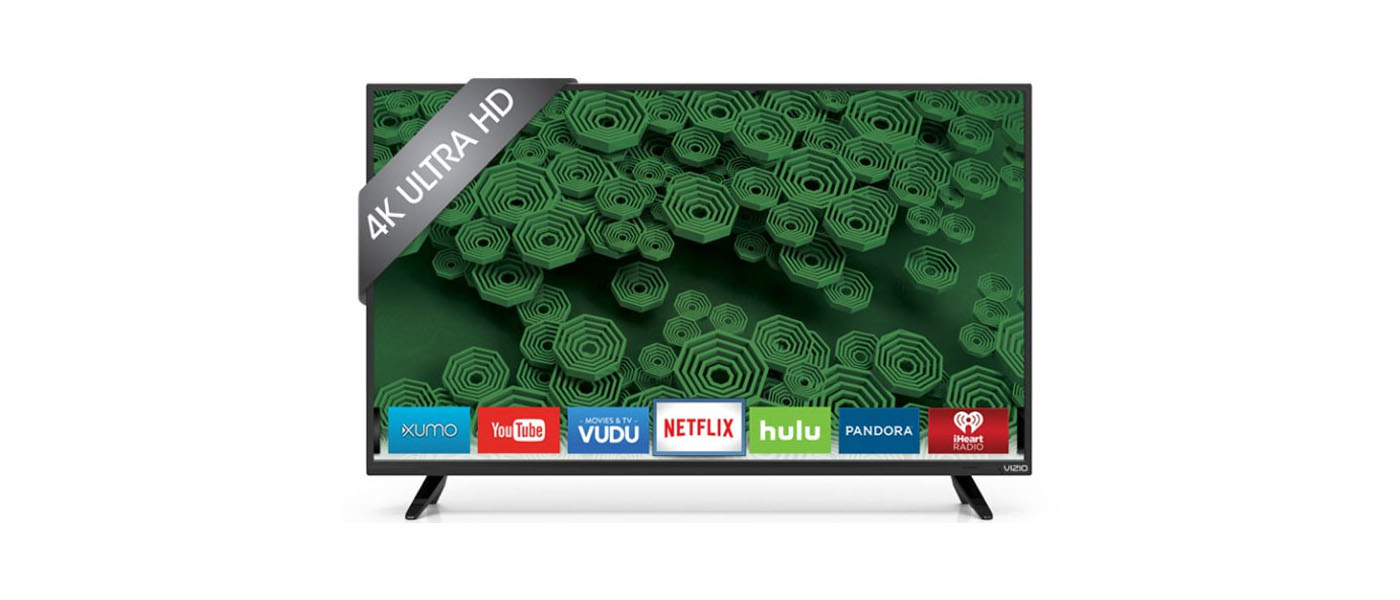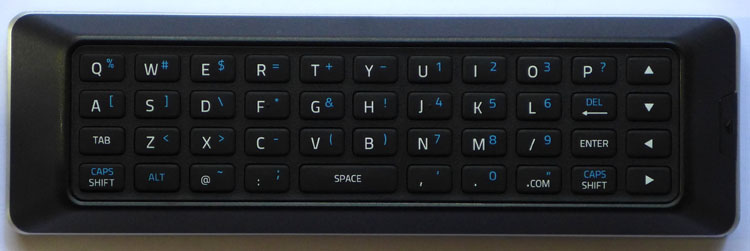Now Vizio, maker of value-oriented HDTVs has gone all-in by adding the technology to its entire line of televisions from the entry-level E-series up to the flagship Reference-series models. Today I’m checking out the M65-C1. It’s an Ultra HD panel with 32 active zones that are selectively and automatically dimmed or brightened to expand the panel’s native dynamic range. What this means is deeper blacks and brighter whites in the same image for perceived contrast that’s well beyond what’s possible with traditional edge-array backlights.
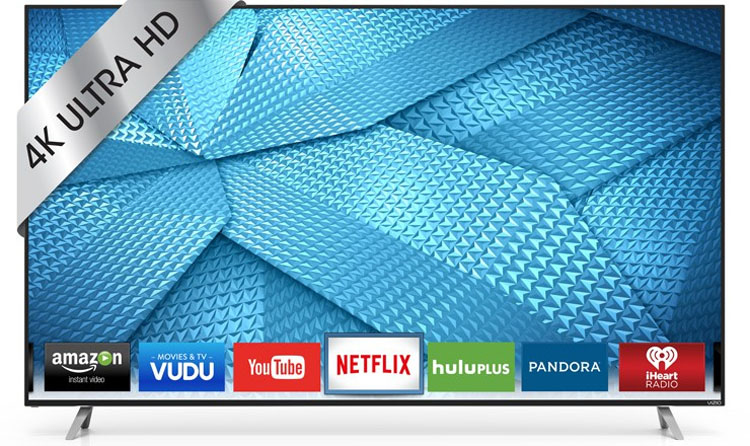
Vizio 4K M65-C1 Ultra HD TV
- Zone dimming for increased dynamic range
- Color-accurate calibrated picture modes
- Vizio Internet Apps Plus smart TV interface for streaming content
- Ultra HD resolution
- HDMI 2.0 with HDCP 2.2 support
- Remote control with QWERTY keyboard
- Amazing value
Even though LCD is now the dominant technology used in both televisions and computer monitors, it suffers from one significant weakness, poor contrast. Compared to today’s OLED screens or the now unfortunately-dead plasma panel, LCD with its always-on backlight is unable to produce true black. There’s brightness to spare but without deep black levels, they just can’t render the kind of image possible from other technologies. Or can they?
Panel Type:
LCD with 32-Zone Array LED Backlight
Native Resolution:
3,840 x 2,160
Maximum Refresh Rate:
120 Hz
Screen Size:
65” Class, 64.5” Viewable
Aspect ratio:
16:9 (1.78:1)
Input Signal Compatibility:
Up to 3,840 x 2,160 @ 60 Hz
Audio:
10 Watts x 2 Speakers, DTS Simulated Surround Mode
Video Inputs:
4 HDMI 1.4a, 1 HDMI 2.0, 1 Shared Component/Composite
Audio Outputs:
Optical Digital Output (DTS & Dolby Digital 5.1, PCM), 1 RCA
Data Inputs:
1 USB, 1 LAN, Built-in WiFi (802.11ac)
Power Consumption:
<0.5 Watts Standby/94.2 Watts Max
Size:
35.37” H x 57.39” W x 11.16” D
Weight:
61.73 Pounds
MSRP:
$1,499
Warranty:
One Year Parts and Labor, Lifetime Tech Support
Company:
SECRETS Tags:
Vizio, Vizio M65-C1, Ultra HD TV, HDTV
Manufacturers have long worked to improve this aspect of LCD performance through various dynamic dimming options made possible by the LED backlight. Since LEDs can be switched on and off many times per second, it’s possible to control brightness very precisely in order to make blacks blacker while maintaining bright highlights.
With an edge array, there is only so much that can be done to improve contrast. But when you place the LEDs directly behind the panel, you can selectively dim specific zones to improve the contrast of the image on the screen at the time. It’s a technique known as zone-dimming and until now it was only available on the most expensive televisions.
Secrets Sponsor
Vizio began as a value-priced brand back in 2002. By designing and engineering their products in the US (Irvine, California to be exact) then manufacturing them abroad, it heralded a major price drop in LCD televisions to the point where big-name companies like Sony and Samsung are now scrambling to compete.
With the latest models they’re really focusing on picture quality with technologies like HDR, wider color gamuts, calibrated picture presets and of course, better contrast. To that end, they’ve added full-array backlights to all their E- M- and Reference-series displays.
I’ve long wanted to check out a panel like this and I finally got my opportunity when Vizio sent me an M65-C1 65-inch Ultra HD TV, commonly referred to as 4K. With a 32-zone backlight and many other features to tempt the videophile, it promises superlative performance for only $1500. Can it measure up? Let’s take a look.
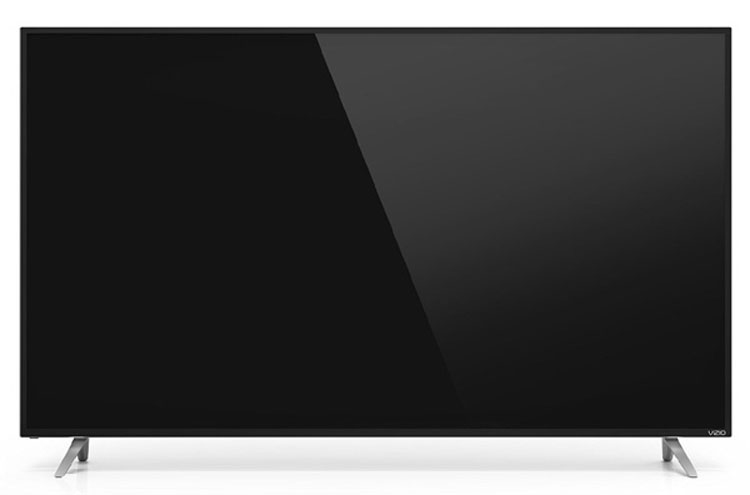
The M65-C1, and all the members of the Vizio M-series are simply styled with a glossy front screen layer, satin-finished aluminum trim band around the sides and a smooth plastic back. The bezel is black and just shy of one-half-inch wide so from a normal seating distance, the panel appears borderless.
The only distinguishing feature about the TV’s front is a small Vizio logo in the lower right corner. The screen coating does a reasonable job of rejecting light but it will pick up stray reflections if you have something shining directly on it. An example would be a sunny window just opposite the set. At an angle though, there are no highlights.
Secrets Sponsor
The stand is made from cast aluminum and consists of two pieces that bolt on. They look small but in practice the panel is quite stable. It’s not too heavy so if you place the TV on a solid surface, you’ll be fine.
From the side the M65-C1 is of average slimness. You can see the nice aluminum trim in this photo. The back plastic tapers in so you can’t see the inputs or any vents from the side. This makes it look better when mounted on a wall. Speaking of that, you’ll find a standard 400mm VESA bolt pattern around back for that purpose.
Inputs are recessed on two jack panels. There are five HDMI inputs though they are not all created equal. Inputs 1-4 are version 1.4a and will only support incoming Ultra HD signals at 30Hz. Furthermore only numbers 1, 2 and 5 support HDCP 2.2. The fifth input is version 2.0 and will accept a UHD signal at 60Hz or a 1080p feed at 120Hz which is great if you want to hook up a gaming PC with a high-performance video card.
If you have analog sources there is a shared component/composite connection available. HDMI ARC is supported on input 1. There are also Ethernet and USB ports and of course the requisite antenna input. The connections are all well-explained in the manual.
The remote is two-sided with TV controls on the front and a QWERTY keyboard on the back. This makes entering search terms in the smart TV interface very fast and easy. The keyboard is backlit but unfortunately the front side of the remote is not. Along the top are direct-access keys to Netflix, Amazon and iHeart Radio followed by transport controls for the streaming interface.
Then you get menu navigation, channel and volume rockers with a numeric keypad at the bottom. I would have liked to see keys to toggle the LED Active Zones on and off and access the judder and motion-blur reduction sliders.
After years of seeing full-array backlights only in high-end televisions, Vizio has brought the technology to a more affordable price point. And given the image quality I enjoyed during my viewing tests, they’ve done a superb job.
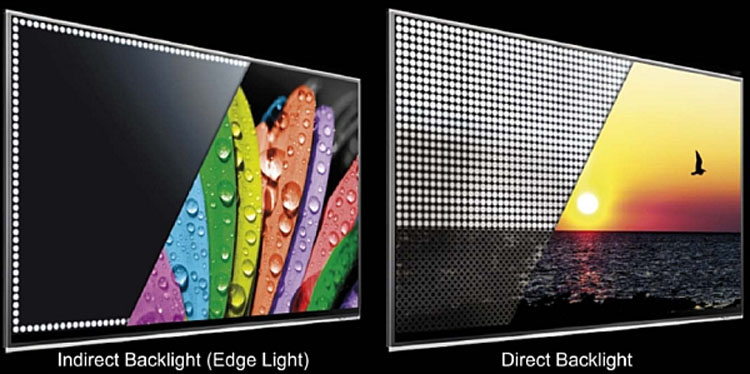
The concept is pretty simple. Most LCD panels set their LED backlights around the edges of the screen. The light is directed by means of a diffuser panel to evenly cover the entire display. While this is a very efficient approach, it’s much more difficult to modulate brightness for the purposes of controlling contrast. You’re pretty much limited to an auto-iris style dimming system where only large parts of the image can be manipulated.
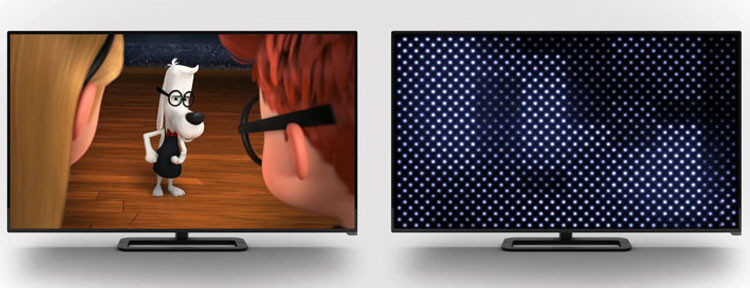
Vizio is using full-array backlights on all M-series TVs with 32 active zones in an 8×4 grid. The above photo shows how different areas of the image can be dimmed to increase contrast. In practice, very deep blacks are possible because LEDs, unlike other light sources, can be turned completely off or switched very rapidly to lower their output.
This precise control is also what’s necessary for future HDR support which is something I discussed at length in HDR and Dolby Vision: What They Are and Why You Will Want Them. (https://hometheaterhifi.com/technical/technical-reviews/hdr-and-dolby-vision-what-they-are-and-why-you-will-want-them/) This technology coupled with a high native contrast VA panel is what gives the M65-C1 such good image depth and black levels.
When you first turn the M65-C1 on it asks you to choose between store demo and home use. Then it moves right into network setup. After entering the appropriate information, the set connected to my router without issue. You can also use a hard-wired Ethernet connection for even better speed and reliability. Once I had done this, I hooked up an Oppo BDP-93 Blu-ray player to the HDMI 4 input and set out to explore the large array of image adjustments.
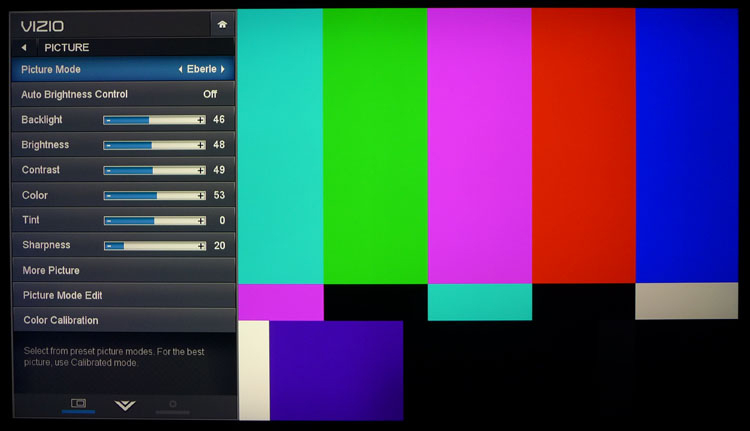
The Picture menu has all the basic controls right up front. The backlight can be adjusted through 100 steps which is big improvement over most other TV’s five or ten-click options. It tops out at over 90 fL (Foot Lamberts); I set it at 46 for 50 fL of output. There are six picture modes of which Calibrated and Calibrated Dark are fairly accurate out of the box. All modes are adjustable and once you’ve made your changes you can save them to a new memory slot. I called my custom settings Eberle. Once created, the memories are available on all inputs and in the streaming mode.
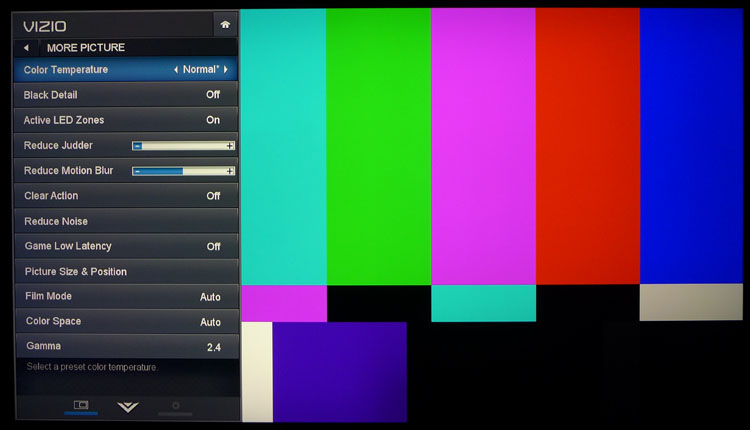
Additional image controls are found in the More Picture sub-menu. Here you can turn LED Active Zones (zone dimming) on or off, control the frame interpolation and motion-blur reduction, engage noise reduction and select the gamma. There’s also an option called Clear Action which is Vizio’s version of backlight strobing. To reduce motion blur the backlight is switched off between frames and it does accomplish that goal. It also visibly reduces light output and image contrast. I preferred the picture with it turned off.
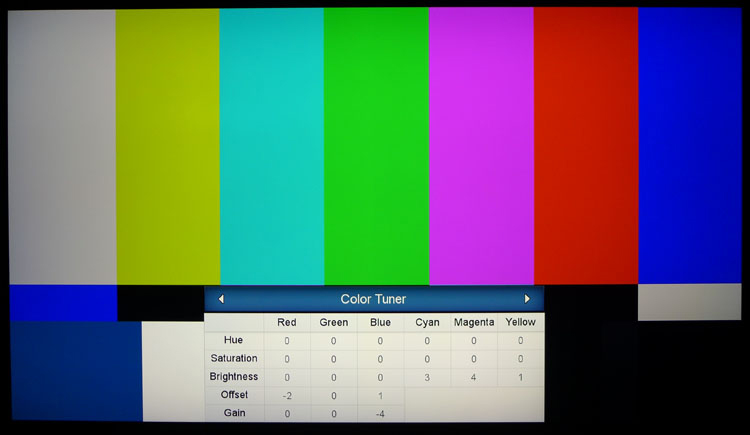
For the instrument-equipped tweaker, there is a menu called Color Calibration that contains a full CMS, 11-point grayscale editor and a few test patterns. I didn’t need to do too much here but I was able to make measurable improvements in both grayscale tracking and color accuracy.
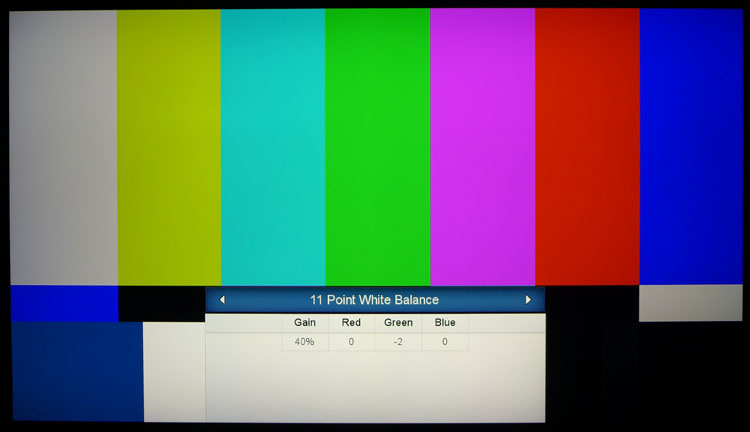
You can do a traditional two-point grayscale adjustment in the Color Tuner but if you want greater control there is an additional 11-point editor. I used it to firm up the 40-percent brightness level.
After calibration, I was quite impressed with the image. As you’ll see in the benchmarks, color is very accurate with ruler-flat grayscale tracking and very good gamma. I’m very impressed at the quality of this TV so far; especially considering it only costs $1,500.
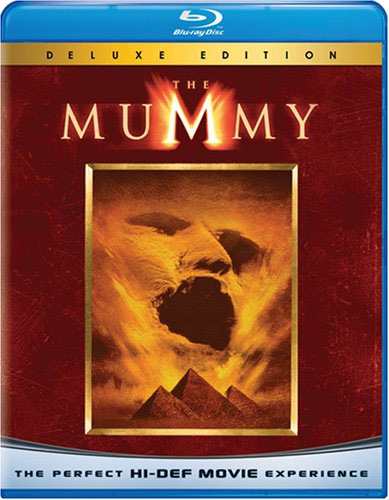
With setup and calibration complete it was time to check out some Blu-ray movies so I turned the way-back machine to 1999 and selected The Mummy from my collection. As a torture test this film pretty much has it all; warm saturated color, moments of sharp detail against softer material, dark scenes with murky shadows and some primitive CGI.
The first thing I noticed was a slight soap opera effect. That is controlled by the M65-C1’s Reduce Judder Slider and is also known as frame interpolation. There are 10 steps available and anything above 2 will smooth motion out to where it looks un-natural, at least in my opinion. I left it on setting 1 which made a nice improvement in motion resolution while still preserving the look and feel of film.
The transfer has a fair amount of grain and that was rendered nicely without any crawling artifacts. For all viewing I turned off the noise reduction options. With solid transfers like this, noise reduction rarely makes any difference in image quality.
Color and contrast looked great as expected given my test results and I enjoyed watching the film very much. The built-in speakers will play fairly loud in a small room and they have a wide but not well-defined soundstage. Dialog is rendered clearly but there isn’t a lot going on in the bass frequencies. Since the speakers fire downwards, the sound can be a bit tubby depending on how the TV is mounted. It’s worth mentioning that Vizio offers a line of soundbars that can help with this deficiency.
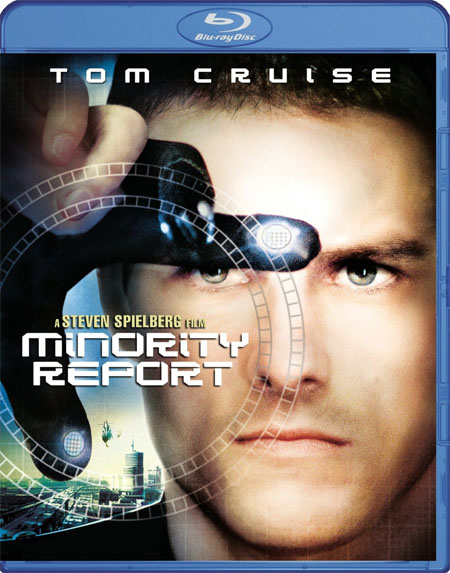
The grainy haze of Minority Report was my next test subject. This film is almost monochromatic so it really needs a high-contrast display to look its best. Thanks to Vizio’s excellent zone dimming, that goal was reached. I never saw any image pumping or halo effects. And the few splashes of color there were popped right out of the action.
Here I fiddled with the Reduce Motion Blur slider. The manual says when you turn it up (there are 10 steps) it increases the frame rate to reduce motion blur. I could only see the subtlest of effects. There is far more to be gained from the Reduce Judder option. I learned later the Motion Blur slider only works with 30 and 60fps content whereas the Reduce Judder feature is for 24p film material.

One of my favorite dark content examples is the opening of Harry Potter and the Half-Blood Prince. There’s a scene where Harry and Dumbledore walk through a small village at dusk. Detail in the buildings like shutter slats and shingles can be very hard to see.
Even with LED Active Zones turned on, there was never any crushing evident from the M65-C1. This is truly one of the best implementations of dynamic contrast I’ve seen from any display.

I finished up with the latest disaster flick from last summer, San Andreas. It’s bright and colorful throughout and there is so much CGI used, it’s hard to tell what’s real and what’s rendered. Transfers like this can often look over-processed but the M65-C1 displayed the material with a very natural and believable look.
The picture had tremendous pop and depth regardless of the brightness level. And color was properly saturated thanks to the precise calibration I was able to achieve.
I had hoped to see announcements from major companies at CEDIA for new Ultra HD Blu-ray players but I only heard a few general statements and rumors. So for now the only practical way to get native UHD content is via streaming. I did this through the M65-C1’s Vizio Internet Apps Plus interface.
I subscribe to Netflix which offers UHD content but my plan doesn’t include it for the $7.99 a month I’m paying. Luckily I have an Amazon Prime membership which does allow access to some UHD streams. I cued up an episode of The Man In The High Castle and watched for quite a while. The clarity was quite excellent especially given how compressed the video must be to stream smoothly over an Internet connection. I get about 60mbps over WiFi from BrightHouse and as a result there were no dropouts or stuttering.
I was unable to make a back-to-back comparison between UHD and 1080p using the same content. But other shows I watched in standard HD looked a little softer. The difference is subtle when you sit further back than eight feet, but UHD was clearer overall.
Smart TV interfaces have evolved to the point where you don’t even need to connect a traditional video source to your display any longer. All the network connectivity, streaming hardware and software is built right into the set. Vizio calls their version Vizio Internet Apps Plus.

Pressing the centrally-located V button on the remote brings up a scrolling bar across the bottom of the screen. Here you can move through various content options, check out stocks, news and weather and even bring up radio feeds. This is all provided you have a functioning Internet connection to the M65-C1 which is the first thing it asks you to set up.
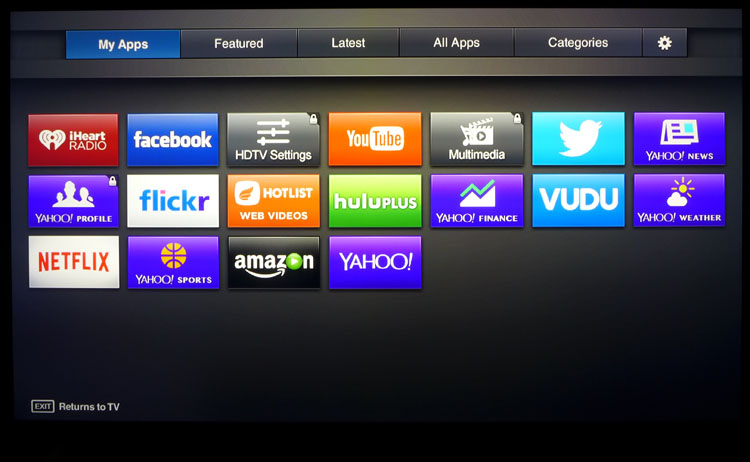
I really liked the simplicity of the app bar though if you want to fill the screen with icons, that option is available. New apps can be added as they become available. I had good luck streaming Netflix content over my WiFi network but if you want the fastest and most robust connection, hook up an Ethernet cable to the TV’s RJ-45 input.

Navigating the various screens is via directional keys on the remote. But typing in search terms is super-easy thanks to the QWERTY keyboard on the back of the remote. It really beats selecting letters on-screen with directional keys. I’m also glad to see Vizio has made no attempt to use a wireless mouse interface like some other TVs. I have yet to find one that works properly.
To measure the color accuracy of the M65-C1 I used an i1Pro spectrophotometer, along with an Accupel DVG-5000 signal generator and CalMAN 5.2 to control the instruments and crunch the numbers. Luminance tests were performed with a Spectracal C6 tri-stimulus meter.
The TV ships set to its Standard mode with the backlight maxed at 100. This will give you around 92 footLamberts of peak white output, more than enough for the brightest living room or sports bar.
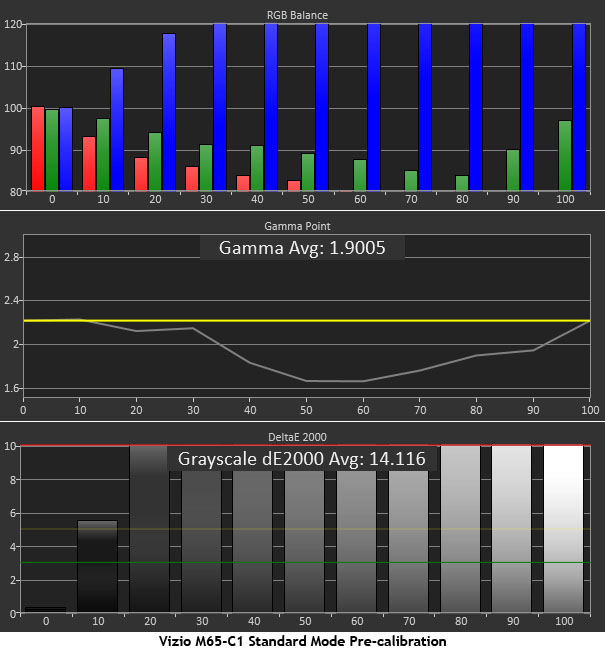
Of the three color temp presets Normal is the warmest and it’s still much to cool. Red runs off the chart completely by the 60-percent level and green almost disappears at 80 but makes a comeback in the brightest steps. Blue meanwhile is very forward. All of this makes for a fairly flat picture that looks bright but lacks depth and color detail.
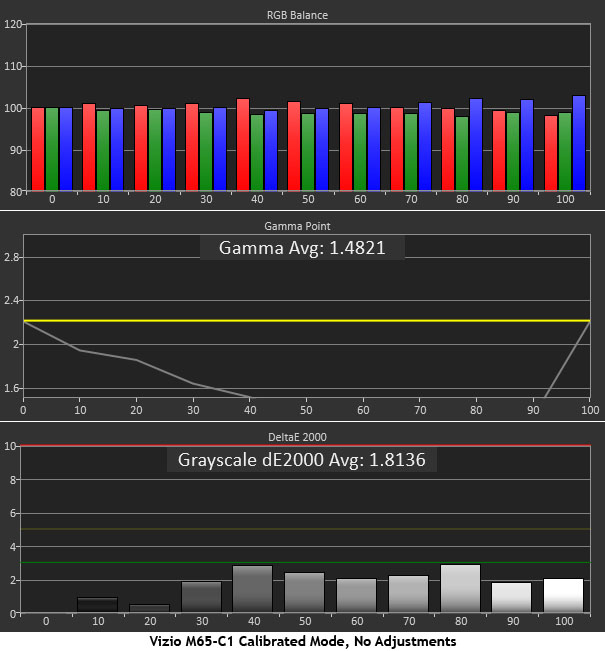
The M65-C1 offers two color-accurate modes called Calibrated and Calibrated Dark. They only differ in their position of the backlight control. The graph above represents Calibrated and as you can see, grayscale tracking is pretty good with all errors below the visible threshold. Gamma however is another story. It looks that way thanks to the LED Active Zones option. It’s turned on by default. It doesn’t make for a good chart but in practice, it increases perceived contrast significantly.
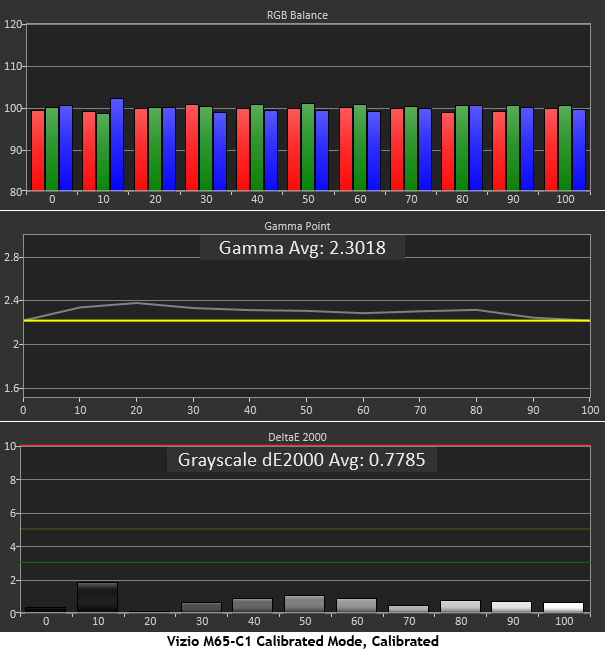
To calibrate the grayscale and gamma tracking I turned off LED Active Zones. That evens out gamma pretty well though I had to bump the preset up to 2.4 for best results. With a few tweaks to the RGB gain and bias controls as well as the 40-percent level of the 11-point white balance editor, I got the grayscale error well under one Delta E. This is excellent performance especially for a $1500 television.
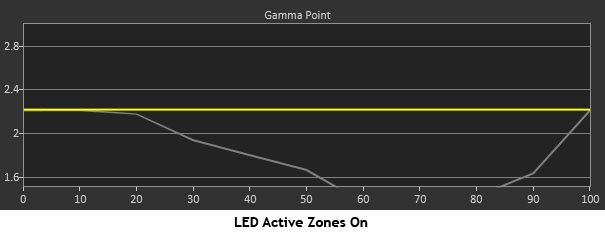
Once the calibration was complete I turned LED Active Zones back on. The gamma returned to its previous state. You might think this would have a negative impact on image quality but honestly I don’t believe it does. The issue comes down to the way gamma is measured. Using the zone dimming increases contrast and improves the picture. It just doesn’t produce a good-looking gamma chart.

Like the grayscale results above, Standard mode looks pretty rough in the color gamut and luminance tests. The too-blue white point pulls the secondary colors well off their targets. And the skewed gamma hurts both the saturation and luminance measurements.
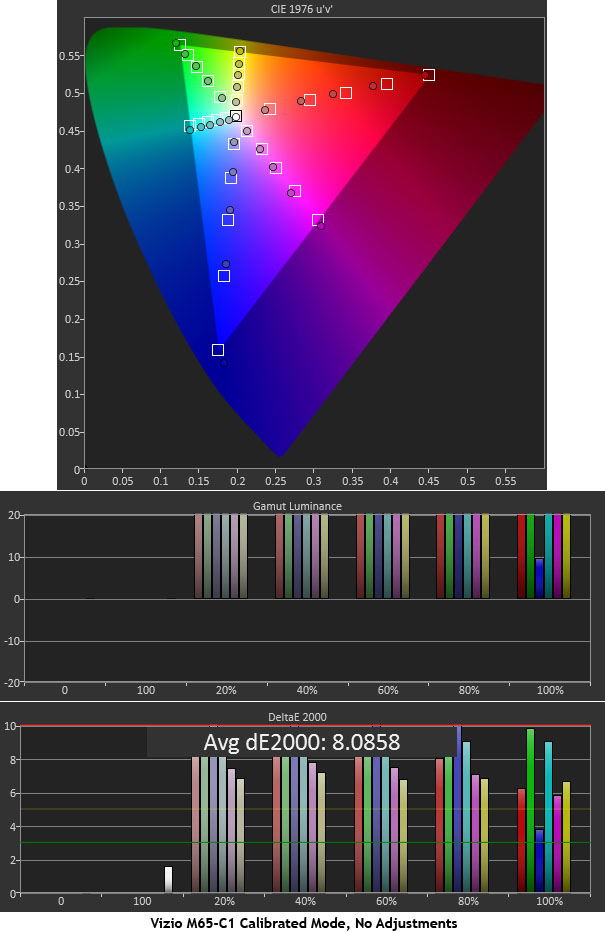
Switching to the Calibrated mode cleans up the CIE chart beautifully but gamut luminance still suffers when LED Active Zones are turned on. I still maintain that the TV looks better that way even though my charts say otherwise.
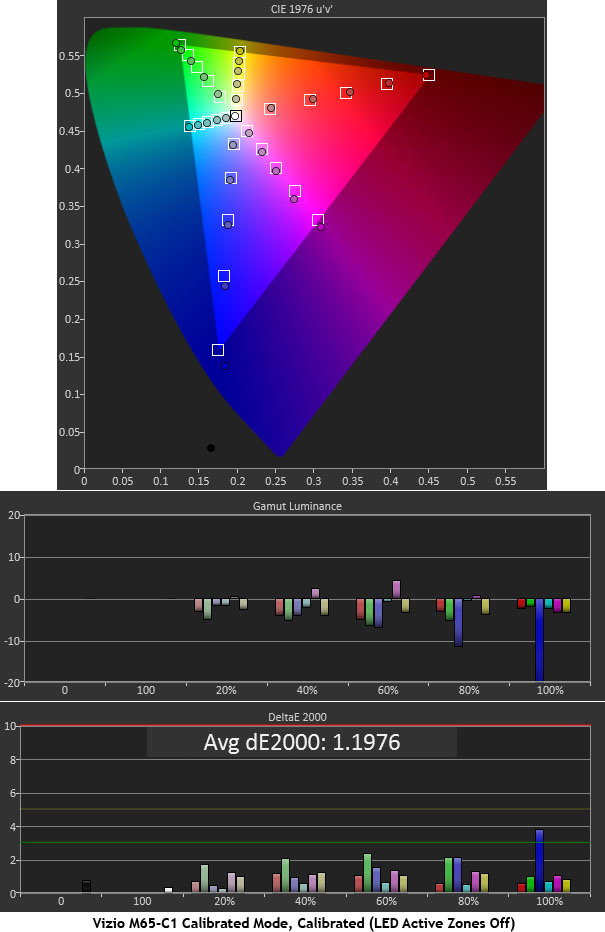
With LED Active Zones off and a few small adjustments to the color management system I achieved results worthy of a high-end professional computer monitor. This is well beyond what I’d expect from a $1500 TV.
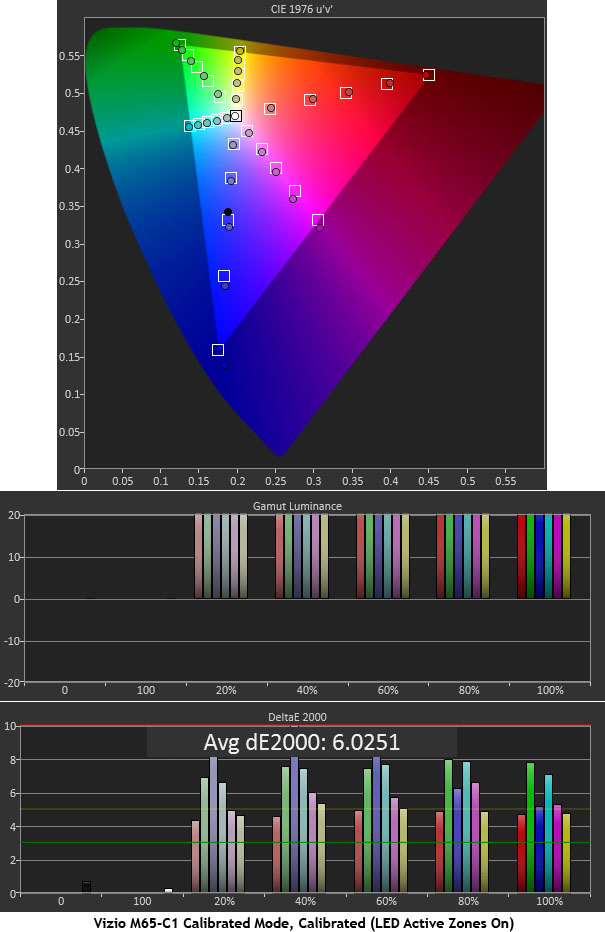
I’ve included this final chart to show how gamma interacts with color accuracy. The CIE chart looks OK but luminance values are quite high. Again it’s not a flaw in the TV as much as it is in the way gamma is measured. Even though I stand behind this testing methodology, it’s important to do a visual reality check especially when any sort of dynamic range manipulation (zone dimming for example) is being used.

I was surprised by these results. Very few displays clip above-white or below-black. This isn’t a big deal since video content isn’t supposed to contain information below level 16 or above level 235. But there are occasions when that rule is bent. It didn’t impact any of the content I watched though.
I was also surprised to see the M65-C1 pass the 2:2 test and fail the 3:2 one. That’s a first in my experience. If you watch any interlaced content; namely DVDs (480i) or Blu-rays in 1080i (like some concert videos), it’s best to let your player handle the video processing.
I adjusted the M65-C1’s backlight to an output level of 49.2439fL. With zone dimming turned off the measured black level was .011fL and the contrast ratio was 4482.6:1. This is the panel’s native contrast and I’d say that’s decent for an average LCD panel.
I attempted to measure contrast with LED Active Zones turned on but was unable to get a black level reading. The backlight does not turn completely off during a zero-signal condition as I was able to see the faintest glow in my otherwise-dark theater. But the Spectracal C6 meter was unable to get a reading.
Regardless of picture mode, if you turn the backlight up to 100 the output is over 92fL. Contrast remains consistent at just over 4500:1. That means those who want to watch TV in a bright room can enjoy a precisely-calibrated image at the same time. Color and grayscale accuracy remain excellent in the Calibrated mode with or without adjustment. And the LED Active Zones option doesn’t seem to affect color in the slightest.
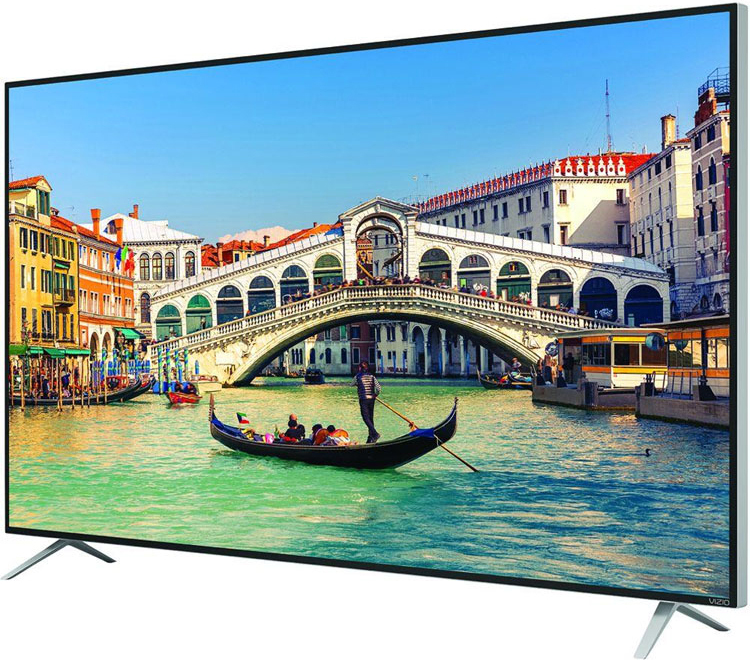
For only $1500 THE VIZIO M65-C1 equals or betters more expensive displays in picture quality, color accuracy, features and user interface.
- Excellent image quality with full-array backlight
- Full set of calibration controls
- Accurate out of the box in Calibrated and Calibrated Dark modes
- Bright enough for well-lit rooms
- Intuitive Vizio Internet Apps Plus smart TV interface
- Superlative value
- Fully backlit remote
- More image controls on remote
- Multi-point gamma editor
At this price, it’s pretty hard to lodge any complaints about the M65-C1. It was only two years ago that an Ultra HD television this size would have cost you at least $5000 and even last year you’d have paid around $3000. That Vizio can deliver this kind of quality for only $1500 is pretty incredible.
For the majority of owners who can’t calibrate their sets, this TV offers two good picture modes that will get you about 90 percent to a reference-quality picture. All you have to do is select Calibrated and set the backlight to your preferred brightness level. And with over 90fL output available, you can place it just about anywhere and it will look fantastic.
And I can’t finish my review without one more mention of the full-array backlight. 10 years ago when the technology first appeared, you couldn’t get it on anything but a super-expensive display. Unfortunately that didn’t change until Vizio added it to their M-series and Reference-series televisions. Now anyone can enjoy the superb contrast that results.
I’ve watched a lot of different TVs over the years and LCD always seemed like a compromise. It does fine with color accuracy and brightness but I never saw black levels like those produced by plasma and OLED. With its zone dimming, Vizio has come about as close as you can get to those technologies. When my Pioneer Kuro dies someday I’ll probably try to buy an LG OLED screen but if that proves to be out of reach, I’d give serious consideration to a Vizio. The M65-C1 receives my highest recommendation. It is truly one of the best TVs I’ve reviewed to-date.


